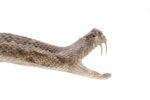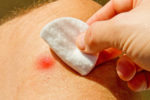In the UK, there is only one wild, poisonous snake and that is the Adder. Some snakes kept in captivity can be poisonous. Obviously these are not in the countryside. In the UK snake bites are more common than most people think. Not only that, but a number of dogs are also bitten. In most […]
Recognising Bites and Stings
Identifying the source of a bite or sting is crucial for appropriate treatment. Common indicators include:
- Redness and Swelling: Localised inflammation at the site.
- Pain or Itching: Discomfort ranging from mild irritation to severe pain.
- Visible Puncture Marks: Marks or wounds on the skin.
- Allergic Reactions: Symptoms such as hives, difficulty breathing, or swelling beyond the bite area.
Immediate First Aid Treatment
General Steps
- Ensure Safety: Remove yourself and the affected person from the source of danger.
- Assess the Situation: Determine the severity of the bite or sting.
- Clean the Wound: Use soap and water to prevent infection.
- Apply a Cold Compress: Reduce swelling and alleviate pain.
- Monitor for Allergic Reactions: Be vigilant for signs of anaphylaxis, such as difficulty breathing or swelling of the face and throat.
- Seek Medical Attention: For severe reactions or if the individual has known allergies.
Specific Considerations
Insect Stings
For bee stings, remove the stinger promptly by scraping it with a flat-edged object to prevent further venom release. Avoid using tweezers, as squeezing can inject more venom.
Animal Bites
Animal bites can introduce bacteria, increasing the risk of infection. After cleaning the wound, apply a sterile dressing and seek medical advice, especially if the bite is from a wild or unvaccinated animal.
Preventing Bites and Stings
- Avoid Provoking Animals: Do not disturb animals, and observe them from a safe distance.
- Use Insect Repellents: Apply DEET repellents to exposed skin outdoors.
- Wear Protective Clothing: Long sleeves and trousers can provide a barrier against bites and stings.
- Maintain Clean Surroundings: To deter insects, keep areas free from food waste.
- Be Cautious in Known Habitats: Stay alert in areas known for specific insects or animals.
When to Seek Medical Help
Immediate medical attention is necessary if:
- Signs of a severe allergic reaction occur.
- The bite or sting is near sensitive areas like the eyes or mouth.
- There is significant swelling, redness, or oozing, indicating possible infection.
- The individual has been bitten by a snake or an unknown insect.
Further Resources
Expand your knowledge on bites, stings, and first aid:
For comprehensive first aid training, enrol in our First Aid at Work Annual Refresher (VTQ) course.


